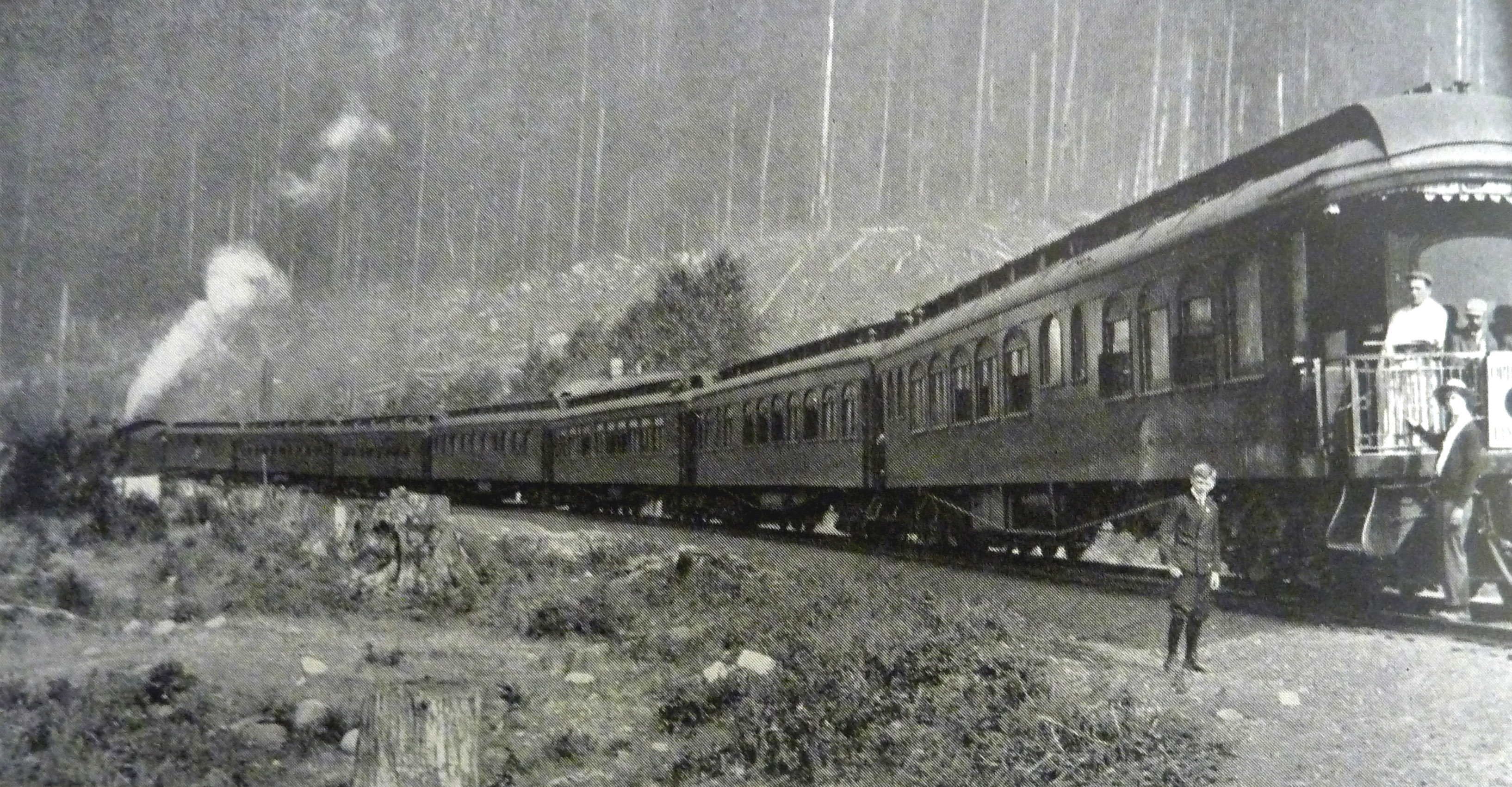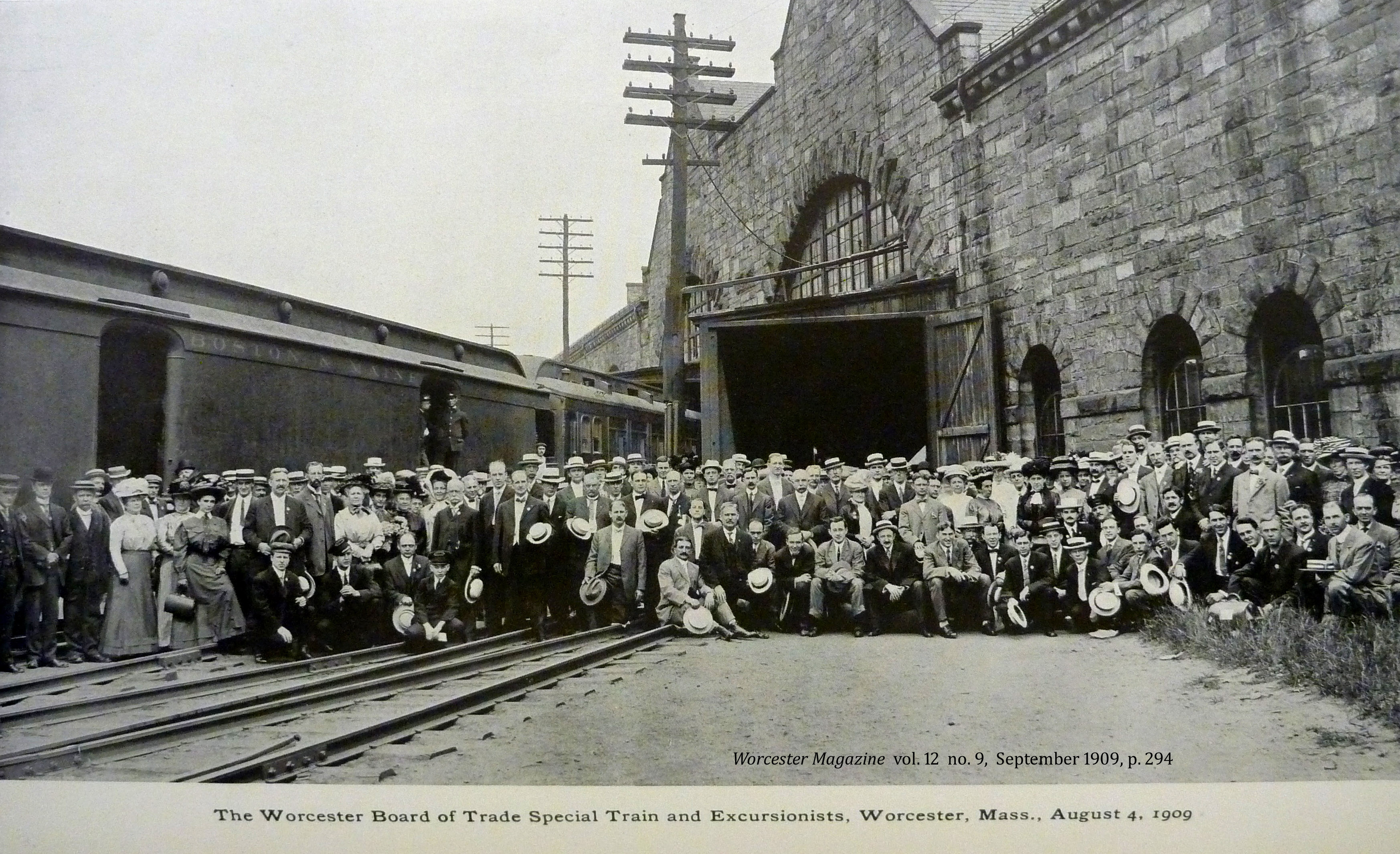|
WorcesterThen: 1909
Excursion to the Exposition: the Alaska–Yukon–Pacific Exposition in Seattle, 1909
This group of a little over one hundred people of Worcester posed for a photograph before boarding the train for a three-week, seven thousand-mile tour of the northern route across the United States and through Colorado on the return trip. Organized by the Board of Trade to “sell Worcester” along the way, the trip was also to give travelers an opportunity to see and enjoy some of the middle and western sections of the country, including some of the most spectacular scenery of the Rocky Mountains and the great northwest. It probably was the longest and most extravagant trip ever taken by most of these people, although some no doubt had sailed to Europe or the British isles.
|
|
|
Source: Worcester Magazine, September, 1909
|
|
The trip. Aside from the pleasures of vacation travel to see some of the greatest natural features of the country, the main goal of the trip for the Board of Trade delegation was to sell Worcester, and to make connections across the nation with potential partners in trade. They carried in the baggage car some 15,000 copies of a booklet entitled “The Heart of the Commonwealth,” extolling the virtues of the city and its industries (In case you thought that phrase was new.) By the end of the trip they were all gone.
By evening of the first day, travelers were dining as the train passed through the Hudson and Mohawk regions of New York, and overnight they slept (or tried to) in the pullman “sleepers,” and morning found them in Detroit. There they spent the day being entertained by their local equivalents, one of the highlights of the day being a riverboat cruise on the Detroit River, separating the U.S. and Canada. The next morning they arrived in Chicago, where the day was spent seeing the city by motorcars on the new boulevard system, and lunch was a grand affair in the “Gold Room” of the Auditorium Annex.
Worcester Magazine, October, 1909, p. 297
At stops along the way, Board of Trade representatives passed out copies of the Worcester packet, letting folks what they were missing by not living here – and, of course, where they should look to find business connections in the future. And at most, if not all, of the stops, the Glee Club sang the popular tunes of the day. (The Music Man comes to mind.)
In Chicago the party had to change trains – from the New York Central to the Great Northern, which would take them to the northwest and back.
Saturday, August 7, they visited and received hearty welcomes in Saint Paul and, later in the day,Minneapolis, before heading northwesterly toward Fargo, North Dakota. Sunday they stopped at Devil’s Island for relaxation after church services in the town, and then reboarded to trek across the state’s northern route into Montana. Monday the party rolled through the magnificent landscapes of northwestern Montana which a year later would become Glacier National Park.
The Great Northern Railroad was a major participant in the establishment of the region as a place for visitors, financing the development of a series of “chalets” in the mountains, essentially hotels both posh and mildly rustic. The railroad also played a role in the settling of the lands of the region which had been known previously as “Indian lands.” They also engaged in the folly of seeing and photographing authentic “Indians” posing for the visitors, for a fee of some kind, for sure. The picture below must speak for itself. The same goes for the Great Northern’s ad for settlers to take claim to “Indian land.” In the post-mortem of the trip in Worcester Magazine in October, the author noted that when they arrived in Spokane, thousands of people were leaving after having come for the lottery for parcels of the land being allocated by the government.
The party’s next stop featuring a reception was Spokane, where they spent the day being feted by local commercial dignitaries, then crossed the state, passing through the Cascades, and arrived in Seattle on Wednesday, a week after their departure from Worcester. Friday at the Expo was designated as “Worcester Day,” which doubtless was a major experience for all concerned, and a good time was had by all, according to Worcester Magazine, despite of the woes of the Glee Club. It fell well short of the revenue goals it had for its eight performances at the fair, but we hope its members were able to enjoy the trip nevertheless. Oddly, the Worcester Magazine stories responsible for the photographs of the trip failed to include any from the Seattle fair itself.
|

A brief stop in the Cascades. Worcester Magazine, October, 1909.
|
The party left Seattle Monday, August 16, looking forward to a week of some of the most awe-inspiring scenic landscapes the United States has to offer. They left Seattle by steamboat down Puget Sound to Tacoma, then reboarded the train for the short run to Portland. After being feted there, the train rolled eastward along the Columbia, then the Snake River, along the border of Oregon and Idaho, and into Salt Lake City and the Great Salt Lake. Then the train ran through Colorado from the west, passing through Grand Junction, Glenwood Springs, and Vail, then turning south to cross the continental divide and descend through Leadville and the Royal Gorge on the way to Colorado Springs and Pike’s Peak, and then to Denver for a two-day rest.
Sources: Worcester Magazine, September, 1909, pp. 247-248 (the itinerary of the trip before departure), and October, 1909, pp. 295-299 (the post-mortem); the Worcester Evening Gazette, August 4, 25, and 26, 1909.
* * * * * Don Chamberlayne, 2017
|




